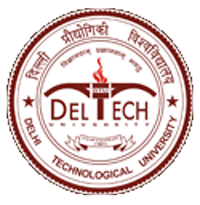Please use this identifier to cite or link to this item:
http://dspace.dtu.ac.in:8080/jspui/handle/repository/16189| Title: | DEVELOPMENT OF SOFTWARE CHANGE PREDICTION MODEL USING DEEP LEARNING TECHNIQUE |
| Authors: | SHAH, AVANISH |
| Keywords: | SOFTWARE CHANGE PREDICTION MODEL DEEP LEARNING TECHNIQUE ML TECHNIQUE |
| Issue Date: | Jun-2018 |
| Series/Report no.: | TD-4087; |
| Abstract: | With the increasing demands of timely delivery of software, software testing has become very much important for any software product. Hence, testing has become an inevitable part in software development cycle. Every stakeholder wants product with minimum bugs or defects at runtime. For removing defects as early as possible, we need to provide more optimized approach for finding out defects in any software. Even after spending thousands of dollars on it, we find defects in the software in livable condition, and these defects hamper the brand image of the organization and provide inconvenience to end user as well. Hence we need to develop such products which have minimum or no defect, high in Quality and cost effective in terms of adding new features or modification in the software. The cost of finding issues in software is directly proportional to the time of its finding in the development cycle. Later found bugs are more expensive w.r.t. previously found defects. Analysis of statistical analysis of code and software binary together between two consecutive releases of product based on software metrics can be useful in predicting changes in the software product. So focus can be shifted to change prone areas majorly in testing, and hence more chances of finding issues in those areas. With the help of these software metrics data from Statistical analysis, software change prediction model can be generated that can be useful in predicting issues in later releases of same software. Thus the development of predictive models to predict faulty or defective classes can help & guide the stakeholders in early phase of the software development cycle. The objective of thesis is to do statistical analysis of code & binary together and then build Deep Learning (DL) based multilayer perceptron model [1] over several Android data sets. The evaluation is performed with an intention to find the effectiveness of the DL based model for prediction of classes’ change in software based on software quality metrics. Software quality metrics used in our study are CKJM, McCabe, Halstead [2] that were generated on 7 android module projects i.e. Contacts, DeskClock, vi ExactCalculator, Launcher3, ManagedProvisioning, PackageInstaller, and Settings over Android Nougat (7.0) and Android Oreo (8.0) releases. DL model in our study is 2 step-model that predicts potentially change prone classes within a given set of software project with respect to its metric data. The data set used in our experiment is organized in two forms: one for learning and other for prediction purpose, or the training set & the testing set. We evaluate model developed using DL with Bayes net ML technique [3] over same data and we found that our DL based multilayer perceptron model performs comparable even on medium size data. |
| URI: | http://dspace.dtu.ac.in:8080/jspui/handle/repository/16189 |
| Appears in Collections: | M.E./M.Tech. Computer Engineering |
Files in This Item:
| File | Description | Size | Format | |
|---|---|---|---|---|
| (2K14-SWT-507)(M.Tech) Major Project II Thesis_Avanish Shah_V3.2.pdf | 2.02 MB | Adobe PDF | View/Open |
Items in DSpace are protected by copyright, with all rights reserved, unless otherwise indicated.



